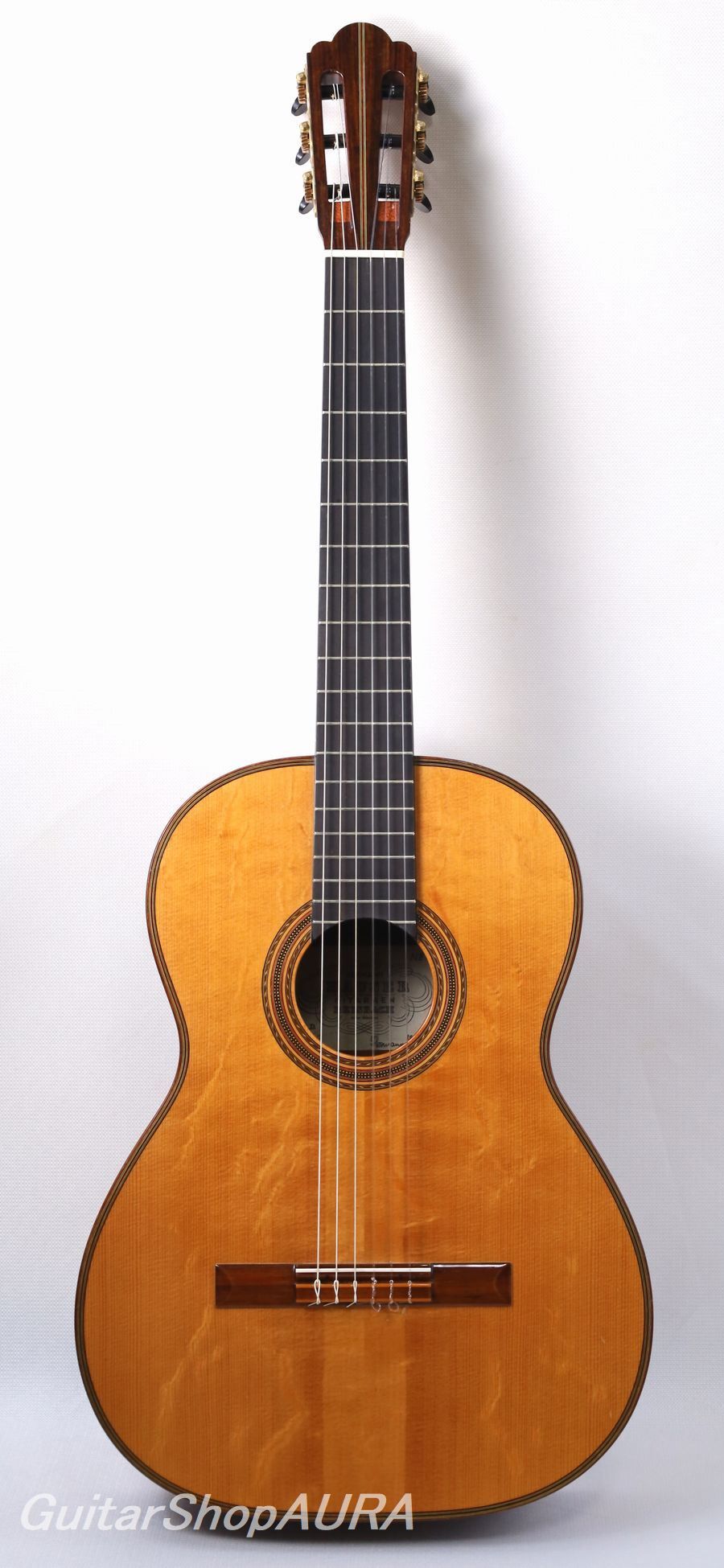
| Instrument | Hermann Hauser III |
| Category | Imported Classical Guitars 〔Used〕 |
| Number/Model | Segovia No.109 |
| Scale length | 645mm |
| Country | Germany |
| Year | 1983Year |
| Top | Solid Spruce |
| Side&Back | Solid Indian Rosewood |
| Condition※ | 7 |
| List price | INQUIRE |
| Price (tax included) | Please Inquire |
| option | with Hardcase |
Click to enlarge the photos below
Neck:Mahogany
Fingerboard:Ebony
Finish:Lacquer
Tuning Machine:Scheller
String height:1string 2.8mm/6string 3.9mm
[Profile]
The finest guitar brand in Germany in the 20th century, Hermann Hauser continues to produce guitars in this tradition through its fourth generation. It is well known that Hermann Hauser I improved his guitars based on Miguel Llobet's interpretation of Torres and Segovia's Manuel Ramirez guitars. He produced the famous model later known as the 'Segovia Model.'
His achievement was the most significant event in the history of guitar-making after Torres’s reform of the guitar, and it had a profound impact on both the playing and making of guitars in the years that followed. This legacy has been passed down to the second and third generations, each continuing to make guitars with their own distinctive character while preserving the brand’s unique tone and exceptional precision.
Hauser I guitars now fetch prices as high as those of Torres guitars, and the second-generation Hauser guitars also command high prices in the vintage guitar market. The third generation continues to refine his craftsmanship and remains active, working alongside his eldest daughter, Kathrin Hauser.
[Description]
We are pleased to announce the arrival of Hermann Hauser III’s “Segovia” model, No. 109, made in 1983—a fine example of his early work. Influenced by the teachings of his father, the second generation, this model is a work of art that lives up to the Hauser brand name with its extraordinary craftsmanship and acoustic perfection.
In the 1980s, the second generation was still in its active period, and its lightweight body and clear, Spanish-like sound production had been established since the first generation. This model is particularly popular for its charm, in contrast to the Germanic tendencies of the late 1990s and beyond.
While based on the Segovia model developed by the first generation, the third generation experimented with its own internal structure (perhaps influenced by the second generation). The rigid acoustic design, a characteristic of Hauser's work, is consistent from bass to treble, and the balance is almost keyboard-like.
Rather than having a traditional Spanish wood feel, the sound is musically refined and released with a pleasing solidity. The sound of Hauser guitars is often described as cold, but this piece is full and expansive. The inevitable harshness of the brand, combined with the maker's inherent sweetness, is typical of Hauser III’s work during this period.
The overall sound is slightly brighter, with a romantic expressiveness that never loses its elegance. The responsiveness to staccato and slurs is superb. The tuning machine has been replaced with a Scheller tuning machine, which is in good working order.